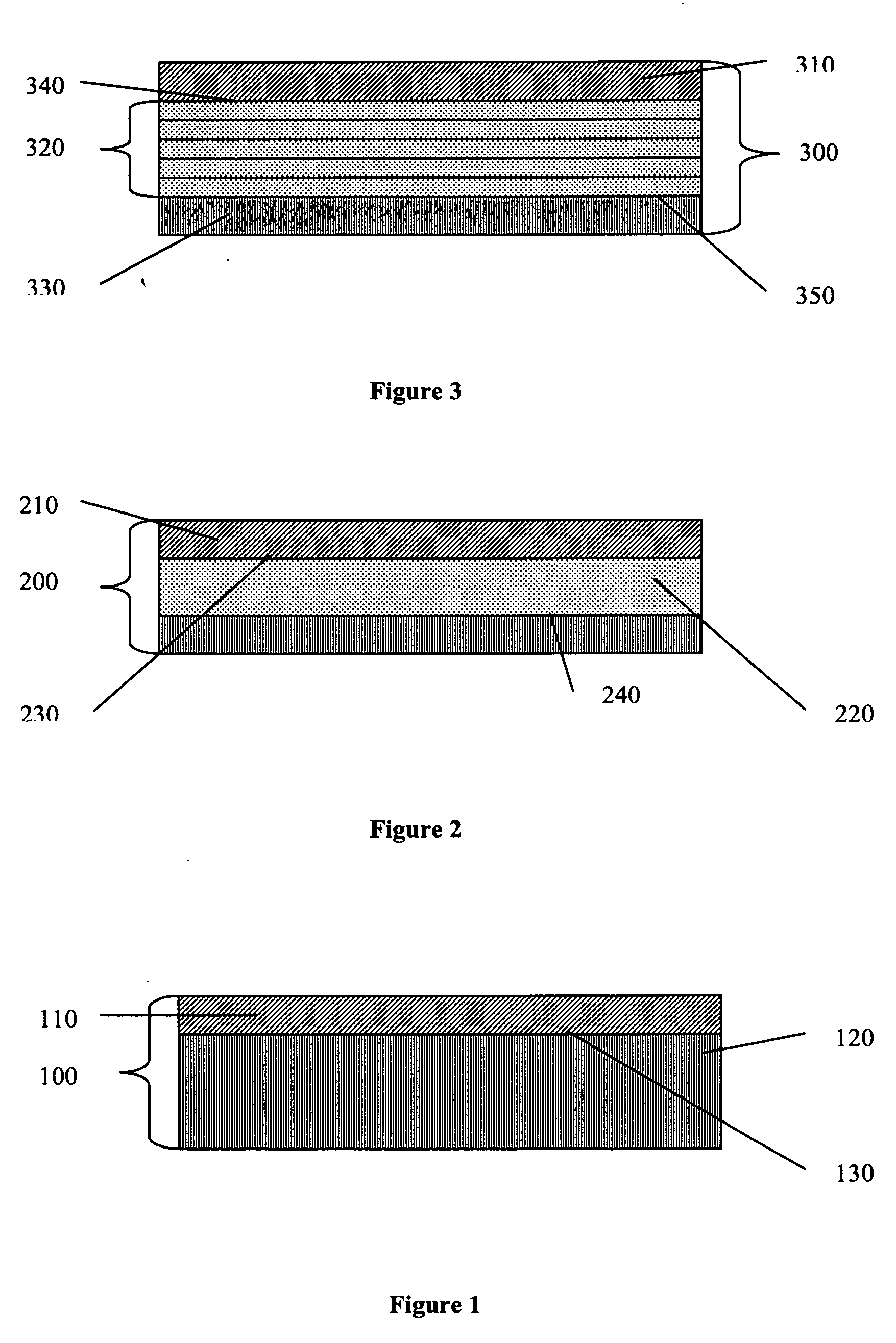Process for making wood laminates using fast setting adhesives at ambient temperature
a technology of adhesives and ambient temperature, applied in the direction of lamination ancillary operations, applications, chemistry apparatus and processes, etc., can solve the problems of increasing process costs, adversely affecting yield and cost, and reducing the yield of resins
- Summary
- Abstract
- Description
- Claims
- Application Information
AI Technical Summary
Benefits of technology
Problems solved by technology
Method used
Image
Examples
Embodiment Construction
[0015] It has been found that multilayer articles (e.g., plywood, flooring panels, and the like), may be efficiently prepared by a process comprising assembling (also referred to as “laying up”) lignocellulosic and / or suitable non-lignocellulosic layers with a fast setting adhesive disposed between the layers to form a multilayer assembly (e.g., a panel), stacking two or more multilayer assemblies to form a stack, and applying uniform pressure to the stack. Pressure is applied orthogonal to the plane of the multilayer assemblies and is done at ambient temperature and using short press times. The fast curing adhesive provides a rapid bonding of the layers in the panel at ambient temperatures of about 45 to about 120° F. (about 7 to about 49° C.) using press times of at least 0.1 minutes, preferably at least 1 minute, more preferably in the range of about 3 minutes to about 60 minutes, even more preferably about 3 minutes to about 45 minutes, even more preferably about 3 minutes to ab...
PUM
| Property | Measurement | Unit |
|---|---|---|
| Percent by mass | aaaaa | aaaaa |
| Pressure | aaaaa | aaaaa |
| Pressure | aaaaa | aaaaa |
Abstract
Description
Claims
Application Information
 Login to View More
Login to View More - R&D
- Intellectual Property
- Life Sciences
- Materials
- Tech Scout
- Unparalleled Data Quality
- Higher Quality Content
- 60% Fewer Hallucinations
Browse by: Latest US Patents, China's latest patents, Technical Efficacy Thesaurus, Application Domain, Technology Topic, Popular Technical Reports.
© 2025 PatSnap. All rights reserved.Legal|Privacy policy|Modern Slavery Act Transparency Statement|Sitemap|About US| Contact US: help@patsnap.com


